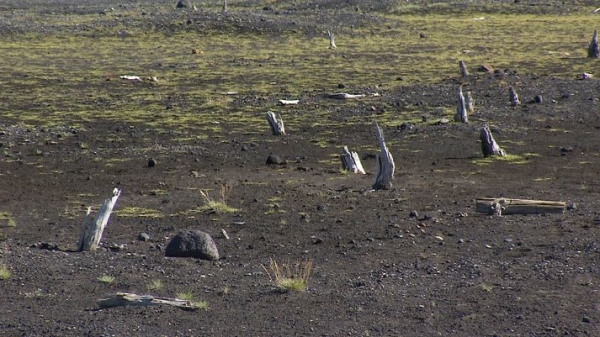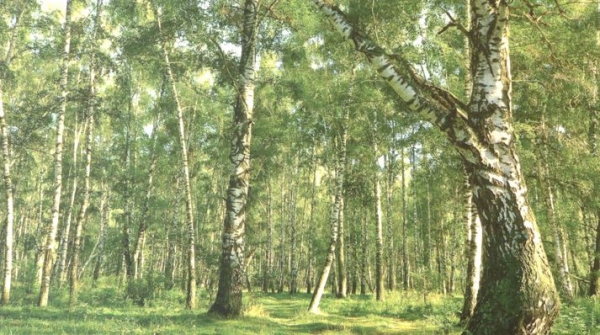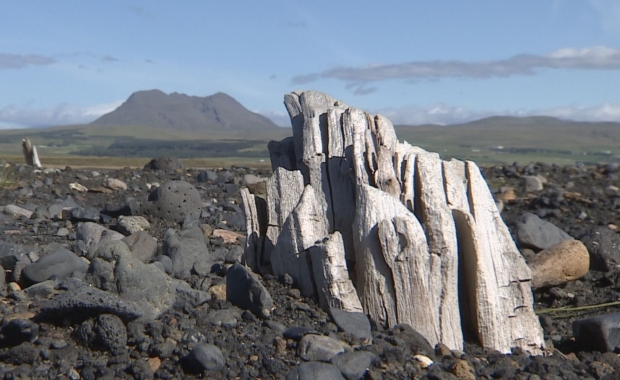Tree rings from a prehistoric forest recently uncovered in Iceland has helped scientists to more accurately date a large volcanic eruption in Mount Katla decades before humans permanently settled the island.
The eruption in Katla in the 9th century is the oldest volcanic eruption to be precisely dated at high northern latitudes, according to a report on the University of Cambridge website.
Katla is located under the ice cap of Mýrdalsjökull glacier in South Iceland and is one of the country's most feared volcanoes. It has historically erupted at least once every century. As its last eruption was in 1918, geologists have been expecting it to take off for a while.
An international team of researchers, including from the Icelandic Forest Service, recently dated the eruption within a few months margin of error, placing it between late 822 CE and early 823 CE. That is half a century earlier than Ingólfur Arnarson, the first settler of Iceland, is believed to have arrived.

Ancient forest uncovered by a spring flood
A spring flood of the Þverá river in South Iceland in 2003 exposed hundreds of birch trees that had been buried for centuries beneath layers of volcanic sediment. The forest, named Drumbabót, is believed to have been wiped out by a massive glacial flood caused by the Katla eruption.
Some of the tree stumps still present in Drumbabót in the region of Fljótshlíð measure around 30 cm across.

The scientists used the tree rings of this prehistoric forest, linked with independent lines of ash and ice core evidence, to date the catastrophe with such precision. Their findings were reported in the journal Geology.
First settlers devastated the forest the covered Iceland
Drumbabót is the best evidence for Iceland being covered in forest when humans first arrived here in the 9th century as is claimed in the Book of Icelanders by 12th century author Ari the Wise, according to a report by local TV news station Stöð 2.
Today, Iceland is mostly without forest, the trees having been harvested extensively in the years after human settlement. Only recently, through concentrated efforts, have trees began to reappear in some areas like the flatlands of South Iceland.

Tree rings from a prehistoric forest recently uncovered in Iceland has helped scientists to more accurately date a large volcanic eruption in Mount Katla decades before humans permanently settled the island.
The eruption in Katla in the 9th century is the oldest volcanic eruption to be precisely dated at high northern latitudes, according to a report on the University of Cambridge website.
Katla is located under the ice cap of Mýrdalsjökull glacier in South Iceland and is one of the country's most feared volcanoes. It has historically erupted at least once every century. As its last eruption was in 1918, geologists have been expecting it to take off for a while.
An international team of researchers, including from the Icelandic Forest Service, recently dated the eruption within a few months margin of error, placing it between late 822 CE and early 823 CE. That is half a century earlier than Ingólfur Arnarson, the first settler of Iceland, is believed to have arrived.

Ancient forest uncovered by a spring flood
A spring flood of the Þverá river in South Iceland in 2003 exposed hundreds of birch trees that had been buried for centuries beneath layers of volcanic sediment. The forest, named Drumbabót, is believed to have been wiped out by a massive glacial flood caused by the Katla eruption.
Some of the tree stumps still present in Drumbabót in the region of Fljótshlíð measure around 30 cm across.

The scientists used the tree rings of this prehistoric forest, linked with independent lines of ash and ice core evidence, to date the catastrophe with such precision. Their findings were reported in the journal Geology.
First settlers devastated the forest the covered Iceland
Drumbabót is the best evidence for Iceland being covered in forest when humans first arrived here in the 9th century as is claimed in the Book of Icelanders by 12th century author Ari the Wise, according to a report by local TV news station Stöð 2.
Today, Iceland is mostly without forest, the trees having been harvested extensively in the years after human settlement. Only recently, through concentrated efforts, have trees began to reappear in some areas like the flatlands of South Iceland.








